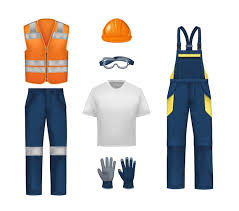Choosing the Right Protective Clothing
Choosing the Right Protective Clothing
Three tips for choosing the right kind of protective apparel for workers.
Employers looking to choose the right protective garments for their workers are walking a delicate line. They must look for clothing that is suitable to protect against the unique hazards of the job while also making sure that the clothing does not restrict or make the worker uncomfortable. Protective clothing must meet federal and industry regulations while also allowing workers to finish their job effectively. It is a hard balance to strike, but when done correctly, employers can meet workers in the middle where comfort equals compliance and compliance minimizes injuries. When looking for suitable protective clothing, OSHA’s Personal Protective Equipment (PPE) Standard (29 CFR 1910.132 for General Industry) addresses the most important activities to complete when choosing protective apparel on the job: assessment, selection and training.
OEM printing logo personalized reflective safety Vest
Assessing Hazards on the Job
Not all workers require the same protective apparel. The responsibilities of the position, environmental hazards surrounding the worker and the time of day on the job could all be factors when choosing protective apparel.
The first question you should ask is: What am I trying to protect my team members from? The answer to this question is the basis from which the entire PPE program will be built. Employers must be open-minded when assessing hazards during this phase of the process and understand the how each hazard could affect the worker and the work environment as a whole.
Responsibility for assessing hazards should not fall to just one person or organization. Instead, collaborate with workers on the job to see what hazards are most often faced daily. If the person assessing the hazards is detached from the day-to-day operational responsibilities, they can help to avoid inherent conflicts between current practice, production and cost pressures, hazard potentials and best practice.
It is helpful to look at your workplace as a whole when assessing for hazards, but employers should also look at the tasks that workers are completing daily. The following list of potential hazard sources could be helpful when determining risk and hazards on the job:
1.Motion that includes moving machinery, or machine parts or tools, or movement of personnel that could result in collision with stationary objects
2. High temperatures that could result in burns, eye injury or ignition of protective equipment
3. Chemical exposures that could result in burns, exposure to skin or eyes or respiratory hazards
4. Harmful dust that could result in scratches or burns to eyes or lungs
5. Light radiation that could cause burns to skin and eyes (welding, brazing, cutting, furnaces, heat treating, high intensity lights)
6. Falling objects or potential for dropping objects
7. Overhead obstructions which create head bumping hazards
8. Sharp objects that might pierce the feet or cut the hands
9. Rolling or pinching objects that could crush the feet
10. Electrical hazards
-
Professional Fire Safety Helmet | Durable Firefighter Protection
NewsAug.16,2025
-
Fire Safety Helmet: Ultimate Protection for Firefighters
NewsAug.15,2025
-
Women's Safety Clothing Canada | Durable & Certified PPE
NewsAug.14,2025
-
Women's Safety Clothing Canada: Shop Durable PPE
NewsAug.13,2025
-
Quality Safety Clothing & Reflective Workwear | Buy Online
NewsAug.12,2025
-
Safety Helmet with Visor for Ultimate Work Protection
NewsAug.11,2025

